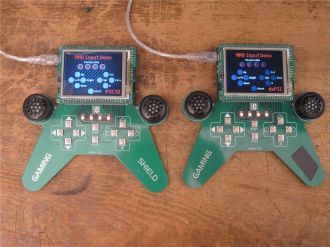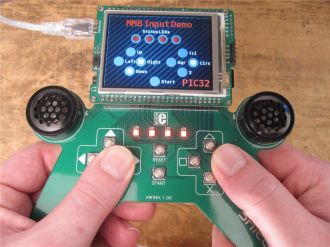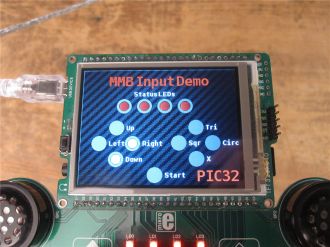
We strongly encourage users to use Package manager for sharing their code on Libstock website, because it boosts your efficiency and leaves the end user with no room for error. [more info]

Rating:
Author: Andrew Hazelden
Last Updated: 2014-10-22
Package Version: 0.2.0.2
Category: Gaming and Fun
Downloaded: 1134 times
Followed by: 1 user
License: MIT license
This is an input library for the MikroElektronika Mikromedia Gaming Shield. It is compatible with the Mikromedia dsPIC33 and PIC32 boards. The library is designed to get you started with the Gaming Shield and provides control over the 4 LEDs on the Gaming Shield and reads the inputs from the buttons.
Do you want to subscribe in order to receive notifications regarding "Andrew Hazelden's Mikromedia Gaming Shield Library" changes.
Do you want to unsubscribe in order to stop receiving notifications regarding "Andrew Hazelden's Mikromedia Gaming Shield Library" changes.
Do you want to report abuse regarding "Andrew Hazelden's Mikromedia Gaming Shield Library".
| DOWNLOAD LINK | RELATED COMPILER | CONTAINS |
|---|---|---|
| 1354395641_andrew_hazelden__mikroc_dspic.zip [2.63MB] | mikroC PRO for dsPIC30/33 & PIC24 |
|
| 1354395670_andrew_hazelden__mikroc_pic32.zip [2.63MB] | mikroC PRO for PIC32 |
|
Today I would like to show you a new software library for the MikroElektronika Mikromedia system. The new Gaming Shield Library makes it easier to develop code that will run on both Microchip dsPIC and PIC32 microcontrollers.
Watch on YouTube
This photo shows the gaming shield library running on the Mikromedia dsPIC33 and PIC32 systems.
View full image
The included VisualTFT project "MMB Input Demo" allows you to test the new library with your Mikromedia board and gaming shield.
View full image
Using the MMB Input demo you can toggle the Gaming Shield LEDs using the touch screen and see a visual representation of the active gaming shield buttons.
View full imageYou can use the file "gaming-shield.h" in your projects to interface with the MMB Gaming Shield. The included example Visual TFT project file "mmbInput.vtft" shows a demo of the Gaming Shield Input Library.
The code was written using MikroC Pro for PIC32 and dsPIC33 and VisualTFT 2.70.
BSD License
MikroMMB for PIC32 or MikroMMB for dsPIC33